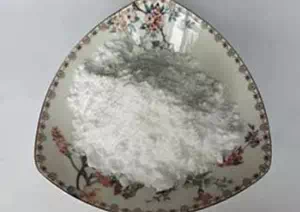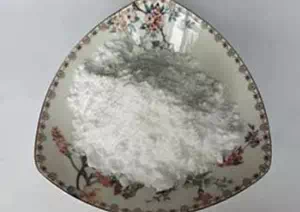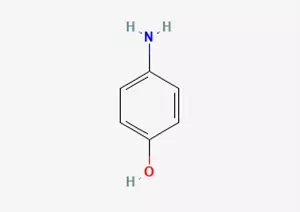All Categories



4-Aminophenol CAS 123-30-8, 4-Aminophenol, CAS 123-30-8
Aminophenol, also known as hydroxyaniline and amino-hydroxybenzene, has three different isomers, including o-aminophenol, m-aminophenol and p-aminophenol (4-aminophenol).
CAS : 123-30-8
Formula : C6H7NO
Mol. wt. : 109.13
EINECS : 204-616-2
| CAS | 123-30-8 |
| Molecular formula | C6H7NO |
| Molecular weight | 109.13 |
| EIENCS | 204-616-2 |
| Form | Crystalline Powder |
| Melting point | 188 °C |
| boling point | 284 °C |
| Density | 1.29 |
| Solubility | 1.5 g/100 mL (20 ºC) |
| PKA | 5.48, 10.30(at 25℃) |
| Color | White to cream |
| Storage temp | 2-8°C |
Aminophenol, also known as hydroxyaniline and amino-hydroxybenzene, has three different isomers, including o-aminophenol, m-aminophenol and p-aminophenol (4-aminophenol). These compounds have extensive applications in multiple fields due to their unique structures and properties.
Firstly, in terms of chemical properties, the weak basicity, weak acidity and strong reducing property of aminophenol make it a multifunctional organic compound. It can react with acids to form salts and can also be oxidized by oxidants. This dual nature makes amino phenol have important applications in the dye industry, which can be used to manufacture various types of dyes, such as acid dyes, direct dyes, sulfur dyes, etc.
Secondly, amino phenols also have extensive applications in the field of medicine. Para-aminophen is an important raw material for the production of antipyretic and analgesic drugs such as paracetamol. In addition, m-aminophen and p-aminophen are also raw materials for many pharmaceutical intermediates, which are of great significance for the research and development and production of drugs.
In addition to the pharmaceutical and dye industries, aminophen also plays a role in the agricultural sector. As a raw material for herbicides, fungicides and insecticides, it helps to increase the yield and quality of crops. Meanwhile, aminophen is also a raw material for thermosensitive pigments and is widely used in photosensitive materials, printing inks and other fields.
It is worth mentioning that amino phenols also hold an irreplaceable position in fine chemical projects. For instance, para-aminophen is used in the dye industry to produce a variety of dye products, such as 6G of weak acid yellow and 5G of weak acid brilliant yellow, etc. In addition, it is also used to manufacture chemicals such as antioxidants and stabilizers, providing convenience for industrial production.
However, although amino phenols have many advantages and application values, we must also pay attention to their safety issues. During use, strictly follow the safety operation procedures, avoid contact with skin and eyes to prevent unnecessary injury. Meanwhile, the discarded aminophen should be properly disposed of to avoid causing pollution to the environment.
In conclusion, aminophenol, as an important organic compound, has extensive applications in multiple fields. We should give full play to its advantages, while strengthening safety management and environmental protection work to achieve sustainable development.
In the field of chemical analysis, it is often necessary to precisely determine the content of metal elements such as gold, copper, iron, magnesium and vanadium. Meanwhile, the detection of substances like nitrite, cyanate and antioxidants is also of vital importance. These measurement tasks not only require high-precision instruments and equipment, but also need professional technicians to strictly follow the operating procedures to ensure the accuracy and reliability of the test results.
In the vast and complex industrial system of the pharmaceutical industry, PAP plays an indispensable and significant role. It is mainly used for the synthesis of N-acetylparacetamol. This drug has a significant antipyretic and analgesic effect in the treatment of colds and is one of the common components in many cold medicines. In addition to synthesizing N-acetyl-p-aminophenol, PAP is also widely used in the synthesis process of many other drugs. For example, in the preparation of aspirin, it is one of the key raw materials; The synthesis of paracetamol, a common antipyretic and analgesic drug, is also inseparable from PAP. The production of drugs such as Antony, vitamin B and complex nicotinamide also requires the participation of PAP. PAP is like an important cornerstone in the edifice of the pharmaceutical industry, supporting the synthesis and production of numerous drugs.
The rubber industry, as an important component of modern industry, has extremely high requirements for the performance and quality of materials. In the rubber industry, PAP can be used to synthesize para-phenylenediamine antioxidants such as 40/ONA, 4020, and 4030. These antioxidants are of great significance for improving the performance and extending the lifespan of rubber products. They can effectively prevent the aging of rubber due to oxidation during processing, storage and use, maintain the elasticity, toughness and other physical properties of rubber, and thus ensure that rubber products can operate stably and reliably in various complex environments.
In the colorful dye industry, the role of PAP should not be underestimated either. It can be used to synthesize the hair dye 4-amino-2-nitrophenol, providing people with a rich variety of hair dyeing options. In addition, PAP can also participate in the synthesis process of sulfide dyes and diphenol benzoate, and is an important raw material for the synthesis of 5-aminosalicylic acid, an intermediate for azo and sulfide dyes. Through the participation of PAP, the dye industry can produce various dyes with bright colors and stable performance, meeting the diverse demands for dyes in the textile, printing and dyeing and other industries.
The application fields of PAP are far more than this. In the photography industry, it can be used to produce the photographic developer Metol, providing crucial support for the development and imaging of photos. Meanwhile, PAP can also be directly used as an antioxidant and additive for petroleum products. During the production and storage of petroleum products, due to the influence of various factors, oxidation reactions are prone to occur, resulting in a decline in product quality. The addition of PAP can effectively inhibit the occurrence of oxidation reactions, improve the stability and quality of petroleum products, and extend their service life.
4-Aminophenol holds a pivotal position in the field of pharmaceutical synthesis and is the final intermediate in the industrial synthesis of paracetamol. In the process of drug research and development and production, 4-aminophenol is a precursor compound of many important drugs. For example, it is a key starting material for the synthesis of drugs such as amidiquine, mesalazine, AM404, paracetamol, B-86810 and B-87836. Moreover, 4-aminophenol has unique chemical properties and can be easily converted into diazonium salts. This characteristic provides more possibilities and conveniences for further chemical synthesis and drug development.
* Prompt reply and 24 hours online, professional team to provide best price and high quality product.
* Sample testing support.
* Every batch of products will be tested to ensureits quality.
*The packing also can be according the customers` requirment.
*Any inquiries will be replied within 24 hours.
*we provide Commerical Invoice, Packing List, Bill of loading, COA , Health certificate and Origin certificate. If your markets have any special requirements, let us know.